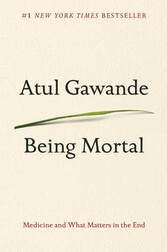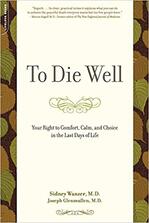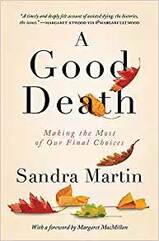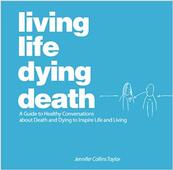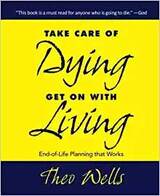Book Review: This is Assisted Dying: A Doctor’s Story of Empowering Patients at the End of Life4/26/2022
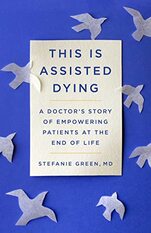 by Green, Stefanie, M.D. Scribner (March 29, 2022) ISBN: 166800478X Dr. Stefanie Green, president of the Canadian Association of MAID Assessors and Providers (CAMAP) opens her book with the question, “What if you could decide, at the end of your life, exactly when and where your death would happen? What if, instead of dying alone, in the middle of the night, in a hospital bed, you could be at home at a time of your choosing?” She begins her book with this question because she wants us to know how it can be possible to die as we wish. Canada has a Federal medical aid in dying law that makes it available to any qualifying Canadian resident or citizen. Most of the requirements are similar to those in the United States, including being over the age of eighteen, suffering from “a grievous and irremediable condition” and making the request voluntarily and under no sense of coercion. A major difference, however, is that the medication does not need to be self-administered. Patients have a choice of two methods: a self-administered drink with a health care practitioner standing by to make sure all goes smoothly, or, much more commonly, medication that is delivered by the clinician through an IV. It is the delivery by an IV that is the subject of Green’s book. It is chosen by the overwhelming majority of her patients and she makes a strong case for it.
The IV process involves four medications: an anti-anxiety medication called midazolam that makes the patient feel relaxed and sleepy; a local anesthetic called lidocaine that numbs the vein and is not always necessary, but is used to be 100% certain; a dose of propofol that creates a much deeper sleep, and rocuronium to ensure there is no muscular movement in the body. The entire process takes eight to ten minutes. Green , who began her career in general practice and maternity and newborn care, tells the reader what she does, how it works, what she’s seen, and what she’s learned. She introduces us to patients and takes us to their bedside while they die. She chronicles the conversations she hears. In one moving chapter she describes how a husband was ready to die and how his wife disrobed, lay naked beside his naked body, and held him closely as he fell asleep. Green admits to being challenged by finding the right words to tell people what she “does.” In the beginning, she called medical aid in dying a medical procedure. She shifted to calling each event a “delivery,” comparing it to her maternity background. “At one end, I was helping deliver a baby, usually into life. At the other end, I was helping deliver a person out of intolerable suffering and through to their death. I liked the symmetry the term evoked, the poetry of it. Turned out, my patients like it too.” There is a lot covered in this well written book, including summaries of where medical aid in dying stands in other parts of the world. She tells the history of getting MAID passed in Canada and of the need to write a clear law. In Canada, she says, “politics, unclear law and fear all played a role.” She writes that we must redefine the word “euthanasia” or else find a substitute. It comes from the Greek eu meaning good or well, and thanos meaning death. The modern understanding in Canada and parts of Europe is that it means the administration of a lethal medication by a health care professional at the request of a competent adult, with the goal of relieving suffering. Canada consciously chose to use the term MAID to avoid the negative connotation. Green’s book offers a comprehensive view of how the practice of MAID in Canada helps to alleviate suffering, even for patients such as Parkinson’s and ALS patients who typically cannot administer the medication themselves, a requirement that is universal in the US. She has no answer for dementia. She has, however, written a sound book that will inform everyone who wants to understand better what medical aid in dying is. Review by Susan Gillotti, PCV Board Member Comments are closed.
|
Being Mortal
by Atul Gawande Medicine has triumphed in modern times, transforming birth, injury, and infectious disease from harrowing to manageable. But in the inevitable condition of aging and death, the goals of medicine seem too frequently to run counter to the interest of the human spirit. Nursing homes, preoccupied with safety, pin patients into railed beds and wheelchairs. Hospitals isolate the dying, checking for vital signs long after the goals of cure have become moot. Doctors, committed to extending life, continue to carry out devastating procedures that in the end extend suffering. Gawande, a practicing surgeon, addresses his profession's ultimate limitation, arguing that quality of life is the desired goal for patients and families. Gawande offers examples of freer, more socially fulfilling models for assisting the infirm and dependent elderly, and he explores the varieties of hospice care to demonstrate that a person's last weeks or months may be rich and dignified. Full of eye-opening research and riveting storytelling, Being Mortal asserts that medicine can comfort and enhance our experience even to the end, providing not only a good life but also a good end. To Die Well: Your Right to Comfort, Calm, and Choice in the Last Days of Life
by Sidney Wanzer, M.D. and Joseph Glenmullen, M.D. The information in To Die Well is both comforting and empowering. Knowing our rights to refuse treatment, as well as legal ways to bring about death if pain or distress cannot be alleviated, will spare us the frightening helplessness that can rob our last days of meaning and connection with others. Drs. Sidney Wanzer and Joseph Glenmullen do not shy away from controversy. They make clear what patients should expect of their doctors, including the right to sufficient pain medication even if it shortens life. They distinguish between normal sadness and depression. They also explain the ways to hasten death that are legal and possible for anyone, and those that require a doctor's help. A Good Death: Making the Most of Our Final Choices
by Sandra Martin A Good Death is timely, engaging and inspiring. In taking on our ultimate human right, award-winning journalist Sandra Martin charts the history of the right to die movement here and abroad through the personal stories of brave campaigners like Sue Rodriguez, Brittany Maynard and Gloria Taylor. Martin weighs the evidence from permissive jurisdictions such as the Netherlands, Oregon, California, Switzerland and Quebec and portrays her own intellectual and emotional journey through the tangled legal, medical, religious and political documentation concerning terminal sedation, slippery slopes, and the sanctity of life. Modern death has become a wrenching political dilemma, one that becomes more pressing as the population ages. A Good Death confronts our fears about dying, our struggle for meaning, and our dread of being trapped by voracious medical technology in a nightmare world that has abandoned caring in pursuit of curing, no matter the cost or the suffering to patients and their families. A Good Death asks the tough question none of us can avoid: How do we want to die? The answer will change your life-and your death. "Living Life Dying Death; A Guide to Healthy Conversations about Death and Dying"
by Jenifer Collins Taylor While some see death and dying as taboo subjects, author Jennifer Collins Taylor, MSW approaches the topics with gentle, thought-provoking prose, demonstrating that openly discussing death and dying is as important to the living as it is to those who may be nearing their final breaths. Her book, Living Life Dying Death: A Guide to Healthy Conversations About Death and Dying to Inspire Life and Living, accomplishes its mission through reflective conversation starters that encompass topics such as compassion, dreams, fear, goodbye, gratitude, grief, honesty, hope, humor, joy, mystery, pain, patience, peacefulness, philosophy of life, relationships, spirituality and many more. Most importantly, the book emphasizes that love is triumphant. In times of health readers are encouraged to reflect on, explore and express their beliefs on the very nature of life and living, death and dying. In times of health challenges the book can be used as a guide to initiate difficult conversations when faced with the possible decline and death of self, friend or loved one. In times of grief this book can be used to bring support and hope to the dynamic experience of grieving. Regardless of where readers are on the pathway from life to death, Living Life Dying Death should be readily available to guide, encourage and inspire healthy conversations about death, dying, grief and loss. Living Life Dying Death calls readers to action, prompting them to find the courage and confidence to more openly discuss death, dying, grief and loss. This book stimulates the reader to embrace living well and encourages those approaching life's final journey to trade fear for love, comfort, forgiveness and a sense of awe. Courageous conversations about life and death allow the strength and beauty of the human spirit to shine. Take Care of Dying---Get On with Living: End-of-life Planning that Works
by Theo Wells The greatest gift you can give your family and friends is your carefully thought out plan for handling the unexpected events at the end of your life. Here—all in one place—are the basic decisions you need to make as long as you’re living: |
Proudly powered by Weebly

